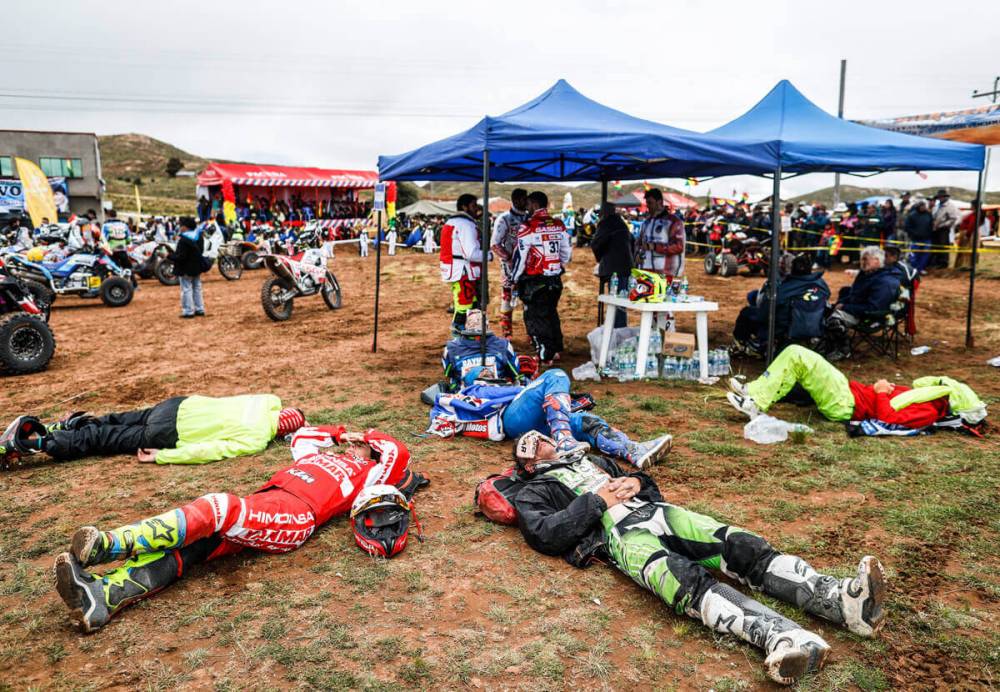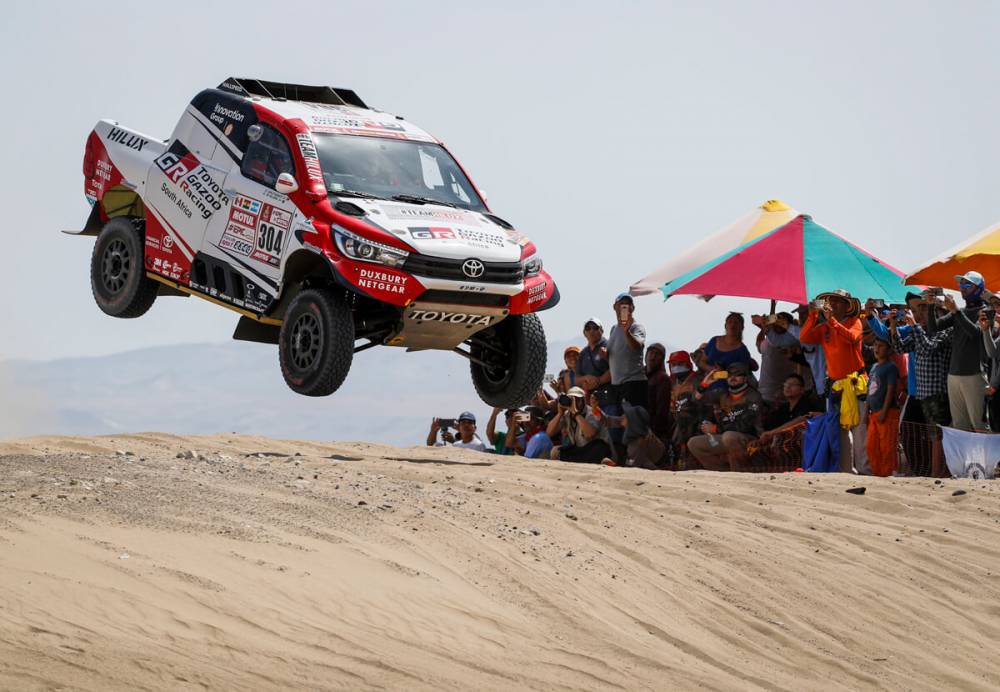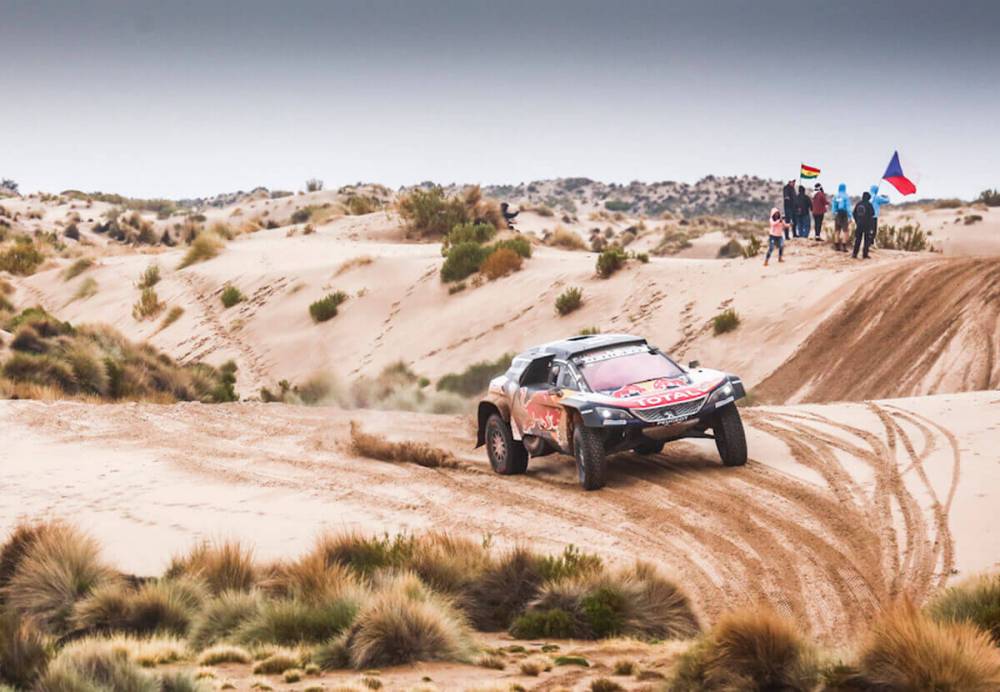2019 Dakar Rally Preview
 |
| Last Year's winner Carlos Sainz Sr. |
The Dakar rally has had a near magical way of tearing at your emotions for a long time. Each year, the drivers and their teams face an extraordinary challenge, combining varied, extreme difficulties. For the 2019 event, the traditional set-up has once again been overhauled, and is sure to be one of the most challenging programs we have ever seen.
Sand, dunes and desert. This is what the Dakar riders and crews are in search of and the exclusively Peruvian menu that has been concocted for this year clearly corresponds to their expectations. In any case, this is the opinion they formulated collectively when they entered after the announcement that the entire rally route was to be within the borders of Peru. In all, 334 vehicles will turn up for the start on January 7, all of whom share the goal of returning to the capital after 5,000 kilometers, including 3,000 of special stage that will be remembered for an unequalled intensity. “It is a little like as if we were competing in the Vendee Globe only in the roaring 40s", says race director Etienne Lavigne in defining the degree of difficulty of the 2019 edition.
[adinserter name="GOOGLE AD"]The skill level of dune crossing, the ability to navigate without detours in open terrain and the indispensable physical strength to battle in the massive sandy sectors will be the criteria to fulfil for the title contenders. In the motorcycle category, the indestructible KTMs of Walkner, Price and Sunderland will, once again, take on the Hondas of Benavides, Goncalves and Barreda as well as the Yamahas of Van Beveren and De Soultrait. In the car class, the former Peugeot stars have moved to Mini, where Sainz, Peterhansel and Despres will join Roma, Przygonski and Terranova, while Loeb will be in a privateer Peugeot entered by PH Sport. They will face stiff competition from the Toyotas of Al Attiyah, De Villiers and Ten Brinke, in the largest car field since 2015. In the truck division, the favorites from Kamaz should face their rivals from Team De Rooy, led by Gerard De Rooy, who returns after a one-year absence.
Beyond the battle for three major titles, looking at the entry list reveals several tendencies that already make the 2019 edition standout. First, the number of rally newcomers totals 135 competitors, allowing 97 vehicles, (30% of the field) to compete for rookie of the year honors. Second, the SxS category has properly taken off this year, with 30 entrants in all, and a battle that promises to be a tight one between former quad category winner Sergey Karyakin, retired bike rider Gerard Fares (3rd in 2017) and the star of American off-road Casey Currie. And third, a female movement with the largest entry since the beginning of the Dakar’s South American era. They will be 17, including long-time competitor in the bike category Laia Sanz, but there will also be a few duos to keep an eye on such as Camelia Liparoti and Rosa Romero in the car category along with Annett Fischer and Andrea Peterhansel in SxS.
Who will die this year?
 |
| Bikers sleep in 2018 |
Unfortunately, motorsport comes with an element of danger no matter what and so over the 41 years the rally has been running, 70 people, including 28 competitors, have lost their lives. Through the advancements of safety and communication technology however, the Dakar Rally is significantly safer than it once was. Limiting speed, making resting at fuel stops mandatory and reducing fuel capacity requirements for the bike classes are all examples of how the organisers have changed the event for the better over the years.
Half marathon: a second chance
The Dakar can be very disappointing if you have to give up just several hundred kilometers after the start of the race. This year, the cars, Side-by-Sides (SxS) and trucks that suffer this fate in the first part of the rally will be able to join the race again after the rest day, in a parallel competition. Competing in another class, these vehicles will have an orange plate and will never be allowed to start in the top 25 of a special stage.
UTV Open: a new class for cars
The car category is accepting new light vehicles, that have notably been seen on the American Baja route and will now be trying their luck in the Dakar race. The UTV Open vehicles meet different technical standards to the SxS vehicles, although they are of similar size. SxS vehicles, a different category altogether, where the vehicles will have a purple plate, have made spectacular progress for 2019 and will include new big names such as Ignacio Casale (CHL), Francisco "Chaleco" Lopez and Casey Currie (USA).
Marathon stage: before the rest day
 |
| #304 Toyota gets air |
A marathon stage will be organized, spanning both days preceding the rest day. At the end of the 4th special stage leaving Arequipa, the vehicles will be directed towards two different bivouac camps: in Moquegua for motorbikes and quads and Tacna for cars, SxS vehicles and trucks. The competitors will join their assistance crews in Arequipa for the rest day. Then, before resuming the competition, the motorbikes and quads will once again spend a night in an isolated bivouac camp in Camana to avoid having to drive at night on the long route before the 6th special stage.
Special formats: covering our tracks
- The open spaces offered by the Peruvian desert will enable two mass starts to be organized: for stage 5 before the Ilo dunes, then for stage 9 in a loop around Pisco.
- In stage 2, between Pisco and San Juan de Marcona, the cars will be asked to open the race. In this very tricky special stage, the work of the navigators will be vital as they will not be guided by the tracks usually left by the motorbikes and quads.
- For stage 8, a real confrontation between the Dakar champions is on the agenda: Super Ica. The orders of departure will combine the 10 fastest motorbikes, 10 fastest cars and 5 fastest trucks from the previous stage's classification.
| STAGE | DATE | START AND FINISH | BIKE/QUAD | CAR/SXS | TRUCK | |||
| – | – | – | Total | Special | Total | Special | Total | Special |
| 1 | Jan 7 | Lima > Pisco | 331 km | 84 km | 331 km | 84 km | 331 km | 84 km |
| 2 | Jan 8 | Pisco > San Juan de Marcona | 553 km | 342 km | 553 km | 342 km | 553 km | 342 km |
| 3 | Jan 9 | San Juan de Marcona > Arequipa | 798 km | 331 km | 798 km | 331 km | 798 km | 331 km |
| 4 | Jan 10 | Arequipa > Tacna or Arequipa > Moquegua | 511 km | 351 km | 664 km | 351 km | 664 km | 351 km |
| 5 | Jan 11 | Tacna > Arequipa or Moquegua > Arequipa | 776 km | 345 km | 714 km | 450 km | 714 km | 450 km |
| – | Jan 12 | Arequipa (Rest Day) | – | – | – | – | – | – |
| 6 | Jan 13 | Arequipa > San Juan de Marcona | 838 km | 317 km | 810 km | 290 km | 810 km | 290 km |
| 7 | Jan 14 | San Juan de Marcona > San Juan de Marcona | 387 km | 323 km | 387 km | 323 km | 387 km | 323 km |
| 8 | Jan 15 | San Juan de Marcona > Pisco | 575 km | 360 km | 575 km | 360 km | 575 km | 360 km |
| 9 | Jan 16 | Pisco > Pisco | 409 km | 313 km | 409 km | 313 km | 407 km | 311 km |
| 10 | Jan 17 | Pisco > Lima | 359 km | 112 km | 359 km | 112 km | 359 km | 112 km |
Recent Results
In recent years, Mini has claimed the most victories however Mitsubishi is historically the most successful manufacturer in the class overall, with Volkswagen, Citroen, Peugeot and Porsche all having had success in the past too.
| 2018 | Carlos Sainz | Peugeot 3008 DKR Maxi |
| 2017 | Stéphane Peterhansel | Peugeot 3008 DKR |
| 2016 | Stéphane Peterhansel | Peugeot 3008 DKR |
| 2015 | Nasser Al-Attiyah | Mini All 4 Racing |
| 2014 | Nani Roma | Mini All 4 Racing |
| 2013 | Stéphane Peterhansel | Mini All 4 Racing |
| 2012 | Stéphane Peterhansel | Mini All 4 Racing |
| 2011 | Nasser Al-Attiyah | Volkswagen Race Touareg 3 |
| 2010 | Carlos Sainz | Volkswagen Race Touareg 2 |
